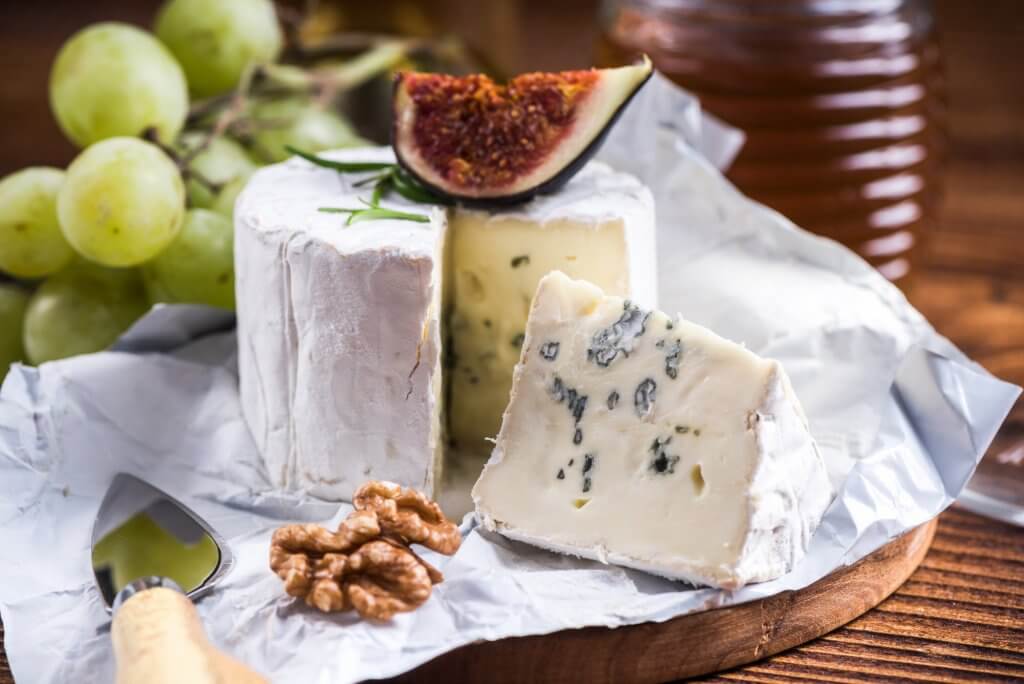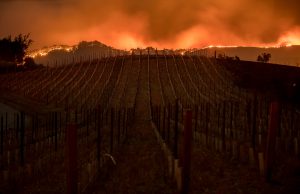Blue Vein cheese is a general term used to describe cheese matured after intentional inoculation with cultures of Penicillium mold. A PDO (and IGT) designated products are a protected Geographical location which only allows the cheese to carry its name if it is made in compliance of strict production measures for that region based on EU laws.
A common romantic tale of how these cheeses came to be follows the tory that once, a young cheese maker, snacking on a lunch of ewe’s milk cheese and bread abandoned his meal to chase after a beautiful girl. He would come back days later to discover blue mold growing on the cheese and blue cheese was invented. There are a few variations to this story, but that is how the locals claim to have discovered the French favorite; Roquefort. A king among Blue Vein PDO cheese.
Blue Cheeses have been firm favorites for many. Oddly, despite their salty nature, they work wonderfully well as dessert courses paired with a glass of Port or sweet Sherry. Their sharp particular flavor, something of an acquired taste, is irreplaceable in any food.
The cheese can be produced with cow’s milk, sheep’s milk, or goat’s milk. Stainless steel rods poke through the cheese to let oxygen in and encourage the mold to grow into delicate blue veins. Ageing varies depending on the style of cheese and can go anywhere from four weeks to four months.
Protected Cheeses.
Over the years, their rising popularity among households and swanky gastronome events has birthed a thriving market. One whose industry is worth an approximate eye popping $120 billion annually. Able and ambitious cheesemakers worldwide would be absurd not to jump at opportunities like that. Then come the imitations and the hit-and-miss producers.
With the reputations of these delicacies at risk, the European Union moved to protect the integrity and unique craftmanship of regional foods. A Geographical Indication System was introduced that provided for Protected Designations of Origin. Within this law is everything from beer to bread. They ensure that unique foods made in certain regions under strict local regulation are allowed to assume the regional name.
The 1951 Stresa Convention brought into act in 1992, particularly caters to the protection of cheese. It classifies them into two; Annex A and Annex B. Where Annex A is a significant, high-level protection go to four designations considered to be Appaletions d’Origne; some examples are Parmegiano Regianno, Gorgonzola, Roquefort and Pecorino Romano. Annex B Cheeses do not enjoy the same extensive protection but are designated to signatory states as long as they comply with production specifications. Some B cheeses are Camembert, Danablu, Emmental, etc.
Under these protections, local farmers can focus on producing exceptional quality and extensive attention to detail with surety of competitive pricing in global markets.
Make no mistake; protected Cheeses command premium prices not from riding the coattails of the PDO name but from age old production techniques, premium conditions of feed and milk, not to mention ageing considerations. All these production steps require expert attention to detail. At the end of which, the resulting cheese is put through rigorous quality checks and controls before being allowed onto shelves.
Here are some blue vein cheeses in order of style that are worth exploring and getting to know;
Creamy blue veined cheese;
Ädelost; A noble blue Swedish cheese made from pasteurized cow’s milk. It has a moldy rind with a 50% fat content after two to three months of ripening. Ordinarily used as table cheese, Ädelost is creamy with a sharp salty flavor.
Semi-soft blue creamy cheese;
Blu del Moncenisio is an un-pressed cow’s milk cheese borne of the Turin Province. Four months of ageing leaves it with a high moisture content yet soft and fragrant with an intense palate of fresh grass and forest.
Soft Blue Veined Cheese;
Bleu Bénédictin; (Semi-soft) First made by Benedictine Abby monks of Saint-Benoît-du-Lac, Quebec. This whole milk Canadian blue cheese is a special treat of earthy mushroom flavors, a creamy center and delicately salted although obviously it does not carry the EU PDO protected designation.
Semi-hard semi fat;
Roquefort; The French king of blue cheeses one may argue is a sheep’s milk cheese from the south of France. Under the EU Law, only cheeses aged in the Combalou natural caves of Roquefort-sur-Soulzon are named Roquefort. The cheese has a particular sharp taste reminiscent of butyric acid with the sharp zing from the salty blue veins. It has no rind and the slightly moist, crumbly white resulting cheese demands about 4.5 liters of milk to produce.
Hard
Dorset Blue Vinney; This English cheese is made from skimmed cow’s milk near Sturminster Newton in Dorset. A hard, crumbly cheese first made as a byproduct of the popular Dorset butter. Dorset butter was highly regarded and sold well in London. However, after production, farmers had large quantities of skimmed milk that would go to waste. As a controlling measure, they resolved to produce cheese from the skimmed milk.
These are a very small cross section of the blue cheese family and one should note that there are endless more just as famous be it under the EU and PDO protection as well as others from outside of the EU. One should seek them out as they are great food companions with most proteins as well.







